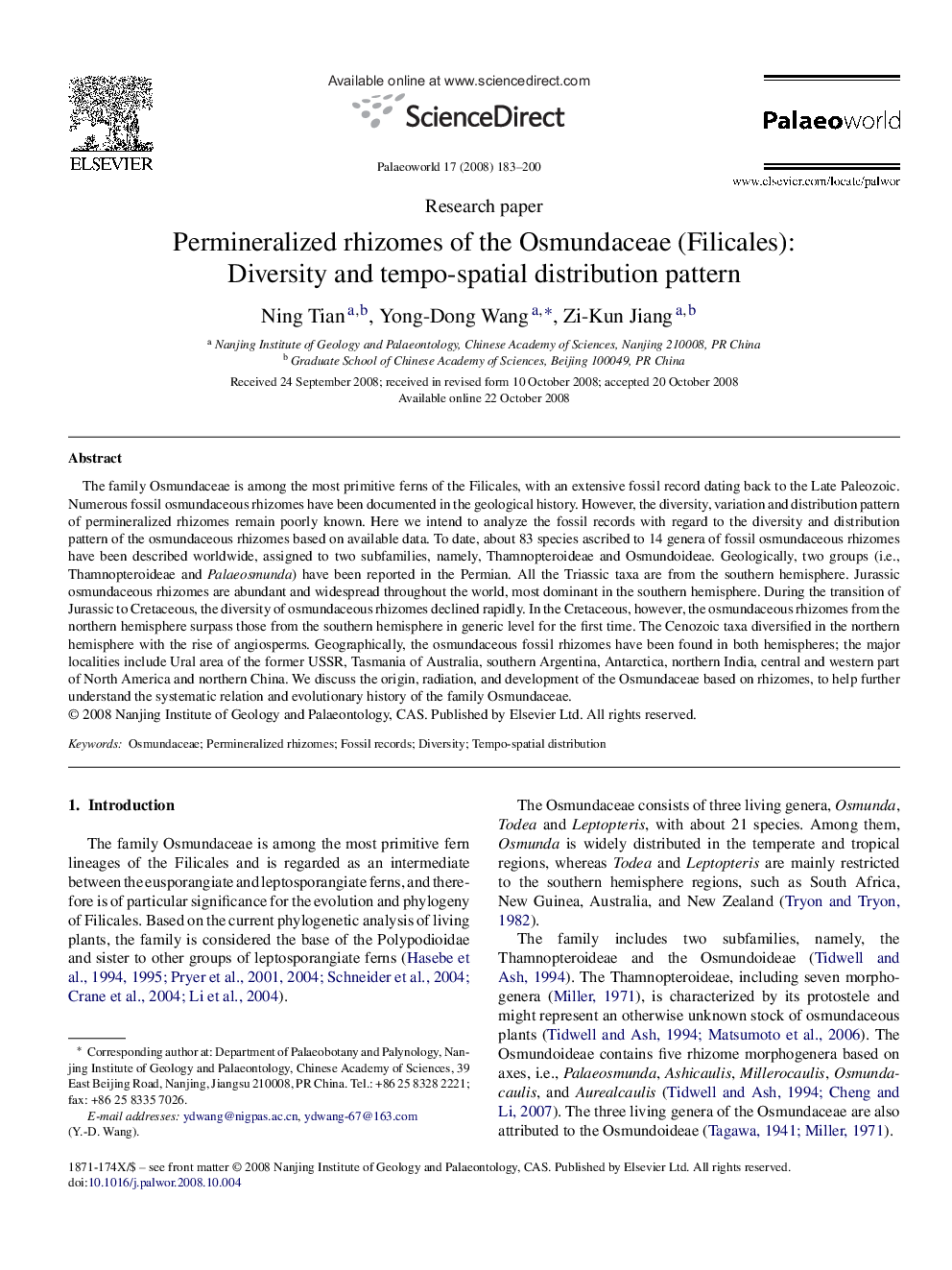| Article ID | Journal | Published Year | Pages | File Type |
|---|---|---|---|---|
| 4749954 | Palaeoworld | 2008 | 18 Pages |
Abstract
The family Osmundaceae is among the most primitive ferns of the Filicales, with an extensive fossil record dating back to the Late Paleozoic. Numerous fossil osmundaceous rhizomes have been documented in the geological history. However, the diversity, variation and distribution pattern of permineralized rhizomes remain poorly known. Here we intend to analyze the fossil records with regard to the diversity and distribution pattern of the osmundaceous rhizomes based on available data. To date, about 83 species ascribed to 14 genera of fossil osmundaceous rhizomes have been described worldwide, assigned to two subfamilies, namely, Thamnopteroideae and Osmundoideae. Geologically, two groups (i.e., Thamnopteroideae and Palaeosmunda) have been reported in the Permian. All the Triassic taxa are from the southern hemisphere. Jurassic osmundaceous rhizomes are abundant and widespread throughout the world, most dominant in the southern hemisphere. During the transition of Jurassic to Cretaceous, the diversity of osmundaceous rhizomes declined rapidly. In the Cretaceous, however, the osmundaceous rhizomes from the northern hemisphere surpass those from the southern hemisphere in generic level for the first time. The Cenozoic taxa diversified in the northern hemisphere with the rise of angiosperms. Geographically, the osmundaceous fossil rhizomes have been found in both hemispheres; the major localities include Ural area of the former USSR, Tasmania of Australia, southern Argentina, Antarctica, northern India, central and western part of North America and northern China. We discuss the origin, radiation, and development of the Osmundaceae based on rhizomes, to help further understand the systematic relation and evolutionary history of the family Osmundaceae.
Keywords
Related Topics
Physical Sciences and Engineering
Earth and Planetary Sciences
Palaeontology
Authors
Ning Tian, Yong-Dong Wang, Zi-Kun Jiang,
